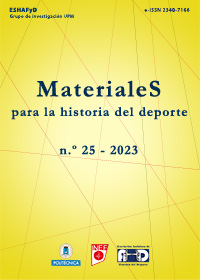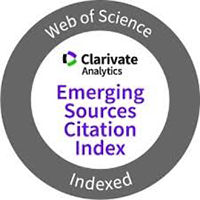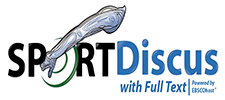Editorial (ENG)
Resumen
Three years ago, back in December 2020, we were excited to launch the 20th issue of the journal Materials for Sports History [Spanish: Materiales para la Historia del Deporte (MHD)]. Since then, the issues from 21st to
25th have been published. Among others, two monographics are included: one related to physical education, coordinated by Jean Saint-Martin, and the other one related to sports, coordinated by Arnd Krüger. Up to 50 articles, reviews and presentations were included in these issues. MHD has in its pages all these contributions to sports and physical education history, which have been published during the pandemic in Spanish, French, English and Portuguese.
Materiales is growing as a journal, not only in quantity and language diversity, but also in other spheres. We consider the monographic issues the right way to go, as they enrich some aspects we deem important. Therefore, our plan is to keep exploring this path.
As a proof of our path towards improvement, the journal has been indexed in FECYT in the third quartil (Q3). Also, MHD was obtained the Impact Factor by Journal Citation Reports (JCR) since 2022 due to the fact that the journal is indexed in the Emerging Sources Citation Index (ESCI) and from 2024 onwards, will be included in the quartil.
As Materiales keeps growing, further compromises arise. One of the needs that the Editorial Committee has tackled is the change of procedure to satisfy the demand. For instance, counting on the corpus of Reviewers, concerning the content quality. We are aware that this is a key element of the journal success, as it provides the necessary quality and impartiality to scientific texts. Thus, we would like to invite all our community of authors, readers and scientists to collaborate as reviewers of MHD in the topic and
language of your expertise (those interested can send an email to materialeshistoriadeporte.inef@upm.es, referring language and field of expertise). We acknowledge that Materiales is an open and free publication,
both for consultancy and publishing. In this context of open access journals, it perfectly fits the modality Diamond Open Access (open access journals without taxes to readers or authors). This modality is especially valued by ANECA in its draft with criteria for evaluation of the 2023 Call for research six-year periods. We will be able to keep belonging to the Diamond Open Access only by counting on our authors and readers to create a wide team of reviewers that share our mission and vision. It goes without saying,
our acknowledgement to those interested, as we will publish annually the list of reviewers, according to the FECYT recommendations.
Indeed, we follow the path that we began three years ago. To wrap up these lines, we desire to express what we stated at the beginning of it all: let the journal be what you expect from it to be.
Descargas
Descargas
Publicado
Número
Sección
Licencia
Aquellos autores/as que tengan publicaciones con esta revista, aceptan los términos siguientes:- Los autores/as conservarán sus derechos de autor y garantizarán a la revista el derecho de primera publicación de su obra, el cuál estará simultáneamente sujeto a la Licencia de reconocimiento de Creative Commons que permite a terceros compartir la obra siempre que se indique su autor y su primera publicación esta revista.
- Los autores/as podrán adoptar otros acuerdos de licencia no exclusiva de distribución de la versión de la obra publicada (p. ej.: depositarla en un archivo telemático institucional o publicarla en un volumen monográfico) siempre que se indique la publicación inicial en esta revista.
- Se permite y recomienda a los autores/as difundir su obra a través de Internet (p. ej.: en archivos telemáticos institucionales o en su página web) antes y durante el proceso de envío, lo cual puede producir intercambios interesantes y aumentar las citas de la obra publicada. (Véase El efecto del acceso abierto).












